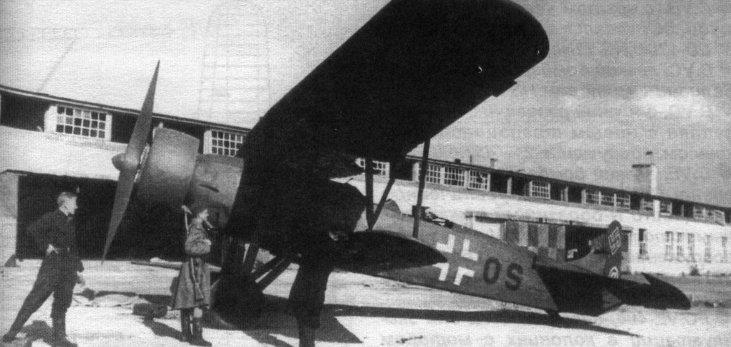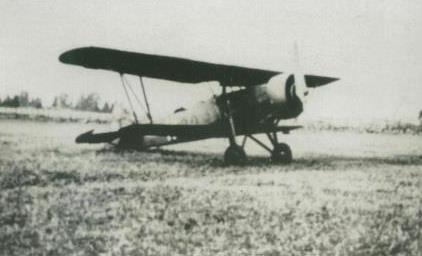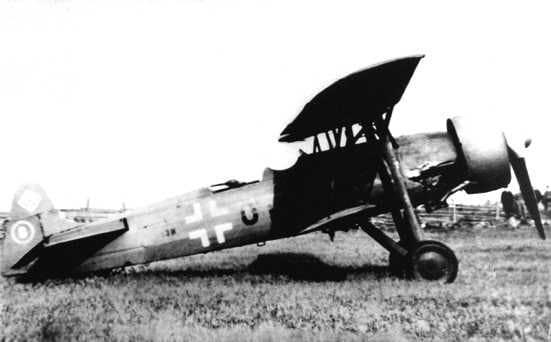The C.V was constructed in the early 1920s by Anthony Fokker. The aircraft was intended as a twin-seated reconnaissance and bomber aircraft. When shown to the public in 1924 was manufactured in a variety of versions; the customer could choose from five different wing constructions (which varied in wing span). The radial engines could give between 336-723 kW (450-970 hp). The landing gear could be changed from wheels to pontoons. The aircraft became an export success for Fokker, it was sold and/or license manufactured in Bolivia, China, Denmark, Finland, Hungary, Italy, Japan, the Netherlands, Norway, Switzerland, the Soviet Union and the US.. Sweden purchased two different versions to use as models for their license manufacturing of the reconnaissance version S 6 and a fighter version J 3.
In May 1940 still 34 C.V's were in service. They had several different roles. A number were assigned as training planes, but the majority was incorporated in recce units. These planes were frequently used during the war. It was indeed applied in the roles it was intended for; tactical recce and light ground support. By making use of the technique called "hedge-hopping" the C.V's proved to be able to survive many Luftwaffe packed skies and deliver quite some support to the ground troops. In particular at the AFB Valkenburg, AFB Waalhaven and the Grebbeberg they were able to successfully attack German positions. During the battle over Holland 20 C.V's were destroyed, mainly on the ground. The 14 survivors would be confiscated by the Luftwaffe and be used as training planes, together with quite a number of captured Danish and Norwegian C.V's.
The Danish airforce received 5 C.Vb's from Fokker in 1926, after which Danish constructor Flyvertroppernes Vaerkstaeder delivered 13 C.Ve's built in license. Later Fokker delivered a better powered C.Ve, which was followed by 23 C.Ve's constructed by FV. After the capitulation of Denmark at 9 April 1940, all remaining Danish C.V's were adopted by the Luftwaffe. Some of these aircraft were used by the Estonian volunteer-manned Nachtschlachtgruppe 11 (Night Ground Attack Wing 11) at Rahkla in 1944. NSGr. 11 used its C.V-Es on the Eastern Front to carry out disruptive harassment night bombing sorties against the Russian front lines. These operations were carried out in response to similar nocturnal operations by Soviet light aircraft, such as the Po-2 biplanes. Two of the C.V-Es of the NSGr. 11 were flown to Sweden in October 1944 by four Estonian defectors, and one of them was handed back to the Danes by the Swedes in 1947.
In 1928 the Norwegian airforce selected the Fokker C.Ve as its prime bomber, and 5 C.Ve's were purchased at Fokker in The Netherlands. Simultaneously a licence contract between the Dutch manufacturer and Haerens Flyvemaskinfabrikk [Kjeller, Norway] was established. HF delivered another 15 C.Ve's and 27 C.Vd's to the Norwegian airforce. In April 1940 still more than 40 of these planes were operational. These planes formed the striking back-bone of the Norwegian airforce in 1940, which is a clear indication of the vintage material status of that organisation when Germany struck ...




The former R-23 was seized in August 1943 and used by the 2./NSGr. 11. On the 13/10 1944 it was flown to the island Gotland with 4 deserter (3 pilots and one mechanic)
| Type |
Two-seat reconnaissance, light bomber (C.V E) |
| Engine |
1 Napier Lion or 1 Armstrong-Siddeley Panther II or 1 Bristol Jupiter VI |
| Dimensions |
Length 9,53 m, height 3,3 m, span 15,3 m, wing area 39,3 m2 |
| Weights |
Empty 1920 kg, max. take off weight 2400 kg |
| Performance |
Max. speed 215 km/h, cruising speed 180 km/h, range 1000 km, service ceiling 6500 m |
| Armament |
1 7,9 mm MG bombs 200kg ( 16 x 8 kg or 4 x 50 kg) |





